Our walk into Sanitiago turned out to be not as straightforward as we anticipated. When we parked in the car park of a sports stadium it appeared we were within Santiago’s conurbation, but as we started our walk we were surprised to find that initially we were travelling through farmland. Shortly afterwards we had to pass through a long and graffitied underpass and then emerged into the outskirts proper. We still had to contend with an extremely steep ascent to the peak of a hill and then down and up through another valley before we arrived, well exercised, in the centre of the old city.

Cathedral Main Facade
Santiago de Compostela has been a place of pilgrimage almost from the moment in the 9thcentury when the body of St. James, the brother of Jesus, allegedly turned up in the city, 800 years after he had been executed in Jerusalem. The story of the journey of St. James’ body from Rome to Santiago in a boat without sails or crew, doesn’t bear much scrutiny from the perspective of a 21stcentury cynic, but that made no difference to medieval pilgrims of whom, it is estimated, as many 500,000 per year made the journey to Santiago from all over Europe.
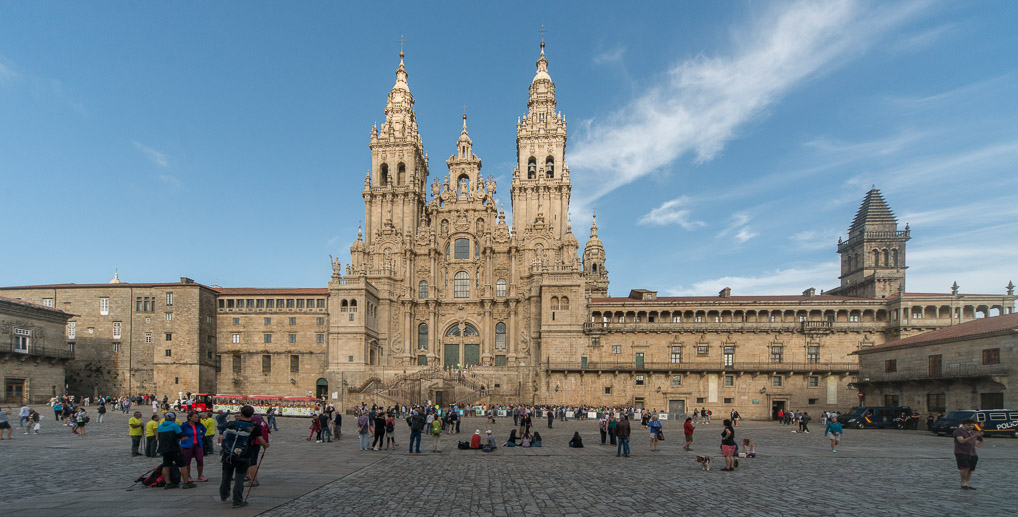
Plaza de Obradoiro
It helped that it was ranked as the third most holy site for Christians after Jerusalem and Rome and that a pilgrimage to Santiago would reduce the pilgrim’s time in purgatory by half. The world’s first guide book was written by a French monk for pilgrims and even Chaucer’s Wife of Bath said she had “been in Galicia at Seynt Jame”. All told Santiago de Compostela has a pretty important place in European cultural history. Pilgrims travelled hundreds of miles in a time when most people did not venture beyond their village. And the pilgrims are still coming – as we have travelled through northern Spain we have seen hundreds of people, on pilgrimage, with their trademark wooden staff and cockle shell, the symbol of St. James.
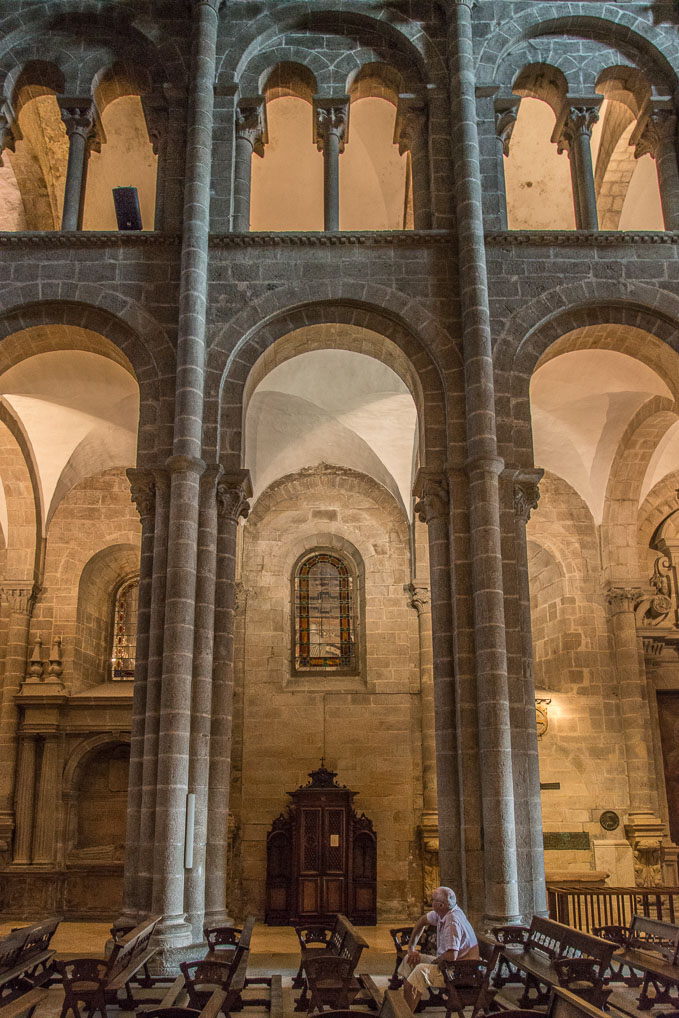
Romanesque Interior
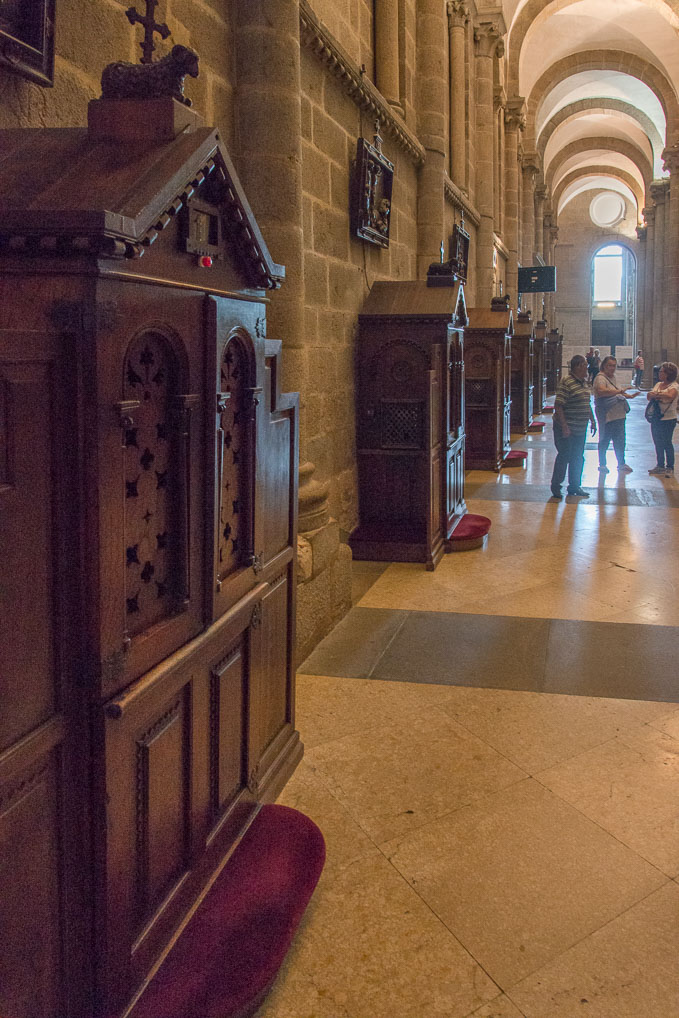
Confession on an industrial scale

Interior Carvings
After that long build up you will be pleased to hear that Santiago did not disappoint. Our main focus was the great Cathedral of which the main front facade is over the top gothic, but most of the rest is in the original 11thand 12th century Romanesque style. The initial impression from the exterior is immense and reminded me of the feeling when I first stood outside St. Peter’s in Rome. The interior is relatively restrained, being of plain granite, although there is, of course, a very elaborate main altarpiece and dozens of iconographic side chapels dedicated to a variety of Saints. On a visit, without dogs, it is a place where I could have happily spent a couple of hours, with it being possible to climb to the roof, visit the crypt and a Cathedral museum.

Cathedral
For the rest of the time we followed a route round the old town suggested by the tourist office. Other than the Cathedral there are not many highlights, but it is a marvellously integrated ancient centre, with twisting lanes lined with ancient inns, churches, monasteries and convents. It is a place, that deserves a two or three days for a full exploration, but as I have said many times before the dogs do not allow for such detailed consideration. Santiago de Compostela is one of the few places we have visited in our trip which we would recommend everyone to visit once in a lifetime.
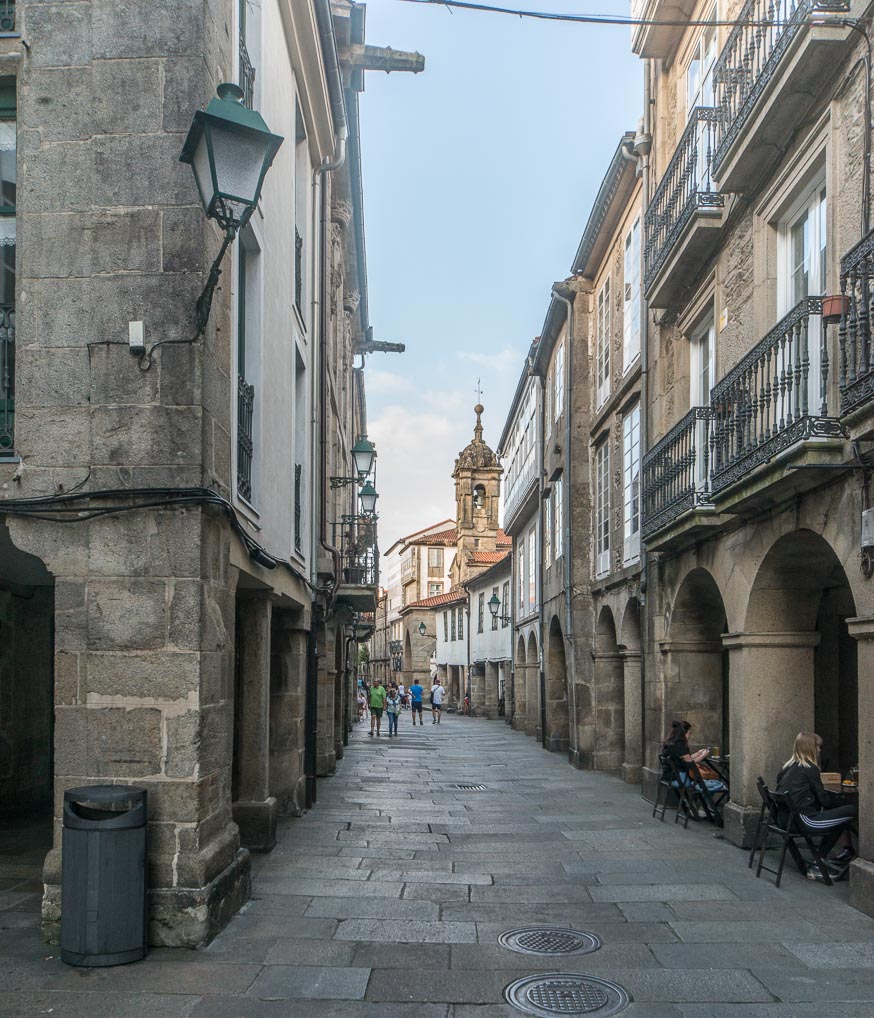
Old Town
We ended our tour near the ancient university where we had been advised there were numerous tapas restaurants. For the first time this trip we actually got some small portions of tapas, free, with our first drink and then followed this up with a couple of larger portions, called raciones and an glass each of the excellent Galician white wine.

Old Town
We were keen to get back to the nasty underpass before dark, which we managed and by the time we got back to Basil he was surrounded by the cars of people using the adjacent sports facilities. They slowly dispersed as the evening wore on and we spent a completely peaceful night.
After having visited so many cities over the last two weeks, today we decided to head for the coast for some downtime, especially since it is very difficult for Mabel to keep on her cone in Basil’s confines and if she can spend some days outside in the sunshine and with her cone on we hope her condition will start to improve.
We have travelled to Sanxenxo on Galicia’s western coast to a small campsite called Camping Monte Cabo (42.416238, -8.876573 €17 on ACSI rates). It is situated on a headland overlooking the Atlantic and we have a pitch with unobstructed views across the sea. We intend to stay for two nights and then move to Portugal for another few days near the sea. While we are relaxing on campsites I may only post every other day.
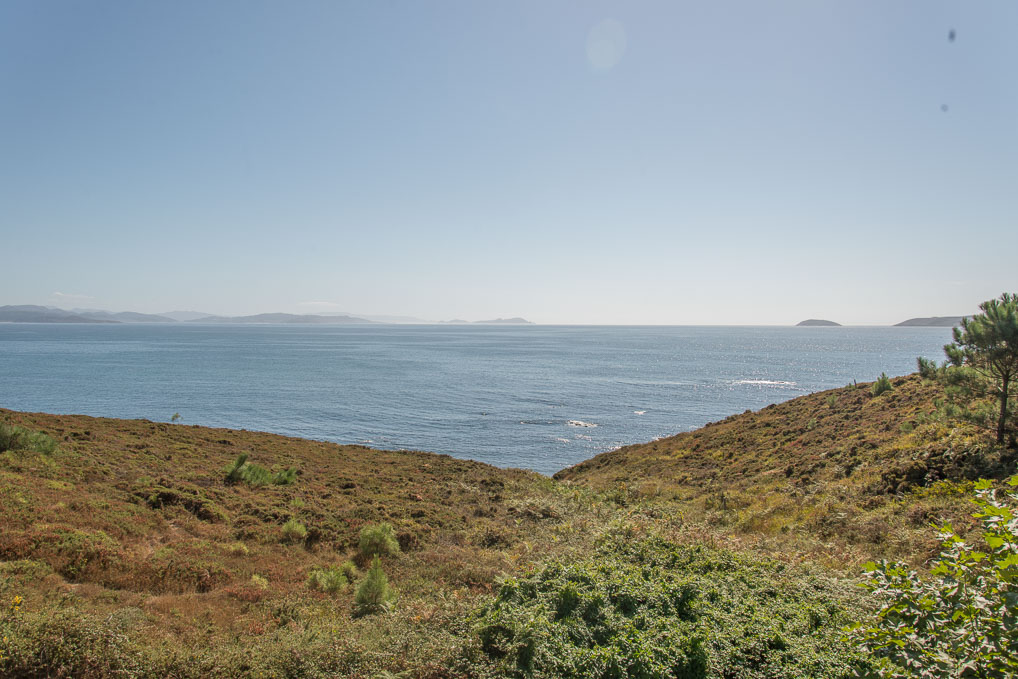
View from Basil today
